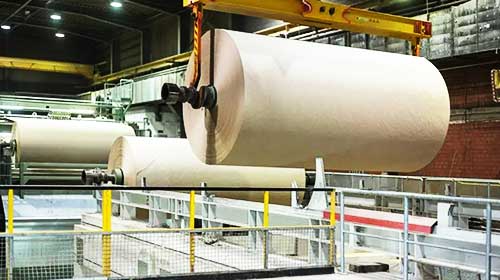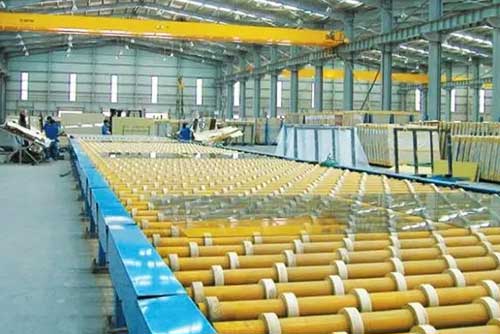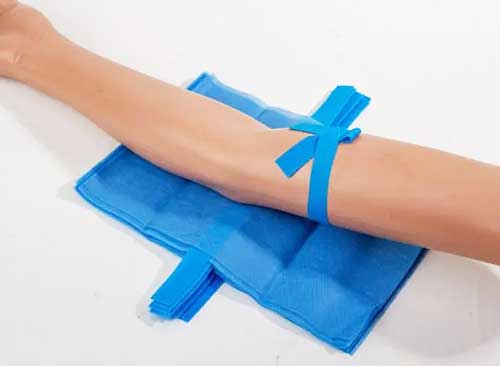Sodium tripolyphosphate formula is Na5P3O10, is an amorphous water-soluble linear polyphosphate. It has wide uses because of its functions, such as dispersion, chelating, gel solubilization, emulsification, pH buffer, etc. It can be used in food processing, industrial manufacturing, medical, and other fields.
I, Food industry
Food grade sodium tripolyphosphate can be used as a food additive, mostly used in meat, dairy products, canned goods, fruit juice drinks, and other foods.

I, Improve the water retention of meat products
Sodium tripolyphosphate food addtive can complex metal ions, increase ionic strength, and improve the adhesion and water retention of food. In this way, it can effectively prevent the loss of water, maintaining the tenderness and taste of meat in the process of marinating, grating, processing, etc.
2, Make fish products more tasty
Sodium tripolyphosphate can increase the muscle’s ability to bind water by raising the pH value in the muscle and making the protein structure loose. As a result, the final fish product will be more flavorful and elastic.
3, Enhance water retention for muscle protein
Sodium tripolyphosphate can also enhance the water retention of muscle protein. Through its unique molecular structure, it binds closely with the proteins in the muscle to form a stable complex. This complex can effectively lock the water and increase the moisture content of the product, making the meat more tender and juicy.
Sodium tripolyphosphate is gluten free, that is suitable for individuals allergic to gluten.
II, Water purification
Sodium tripolyphosphate can be used to purify water in industry, not only for home tap water treatment, but also widely used in industrial and agricultural irrigation water purification. It is one of the earliest, most widely used and most economical corrosion inhibitors for cooling water.

1, Remove impurities in water
Sodium tripolyphosphate can combine with alkaline metal ions in water to form water-insoluble precipitate, thus removing impurities in water.
2, Remove heavy metals from water
Sodium tripolyphosphate can form complexes with heavy metals in water and precipitate them down, thus removing heavy metals from water.
3, Inhibit corrosion and scale deposition
Sodium tripolyphosphate can form a stable protective film to prevent scale and dirt deposition in industrial circulating water system, and protect the equipment from corrosion and blockage.
III, Detergent industry
In the detergent industry, Sodium tripolyphosphate can be used as bleaching agent, deodorizer, antiseptic for the soap and detergent.

1, Chelating metal ions in hard water
Sodium tripolyphosphate can chelate with metal ions of Ca2+, Mg2+, and others in hard water, preventing these ions from combining with the active substances in the detergent to form insoluble metal salts. In this way, it can reduce the amount of detergent and avoid the darkening of clothes.
2, Enhance the washing effect
Sodium tripolyphosphate has a gelling and emulsifying effect on the protein and fat of the dirt. It can promote fat emulsification, dispersing solid dirt, thus improving the detergent’s ability to detergent.
3, Prevent detergent caking and frosting
The powder synthetic detergent is easy to absorb moisture and caking, sodium tripolyphosphate can form hexahydrate after absorbing water, so can maintain the dryness of the detergent and granular, and prevent the detergent caking by removing the moisture.
4, Adjust the pH value
Sodium tripolyphosphate has a large alkaline buffer effect, which can keep the pH value of the detergent solution in the appropriate range and remove the acidic dirt.
IV, Textile printing and dyeing industry

1, Water softener
Sodium tripolyphosphate can complex calcium ions and magnesium ions in hard water to soften the water, to improve the effect of printing and dyeing.
2, Detergent
In the textile cleaning process, sodium tripolyphosphate can be used as a detergent to help remove the dirt on the fabric.
3, Dispersant
Sodium tripolyphosphate can disperse dirt, improve decontamination, and clean various textiles.
4、Co-solvent
As a co-solvent, sodium tripolyphosphate helps to improve the solubility and dispersion of dyes, thus improving the dyeing effect.
V. Paper industry

1, Suspension stability
In the process of paper production, the pulp will be affected by stirring, repeated conveyance and other factors, which will easily lead to fiber agglomeration and precipitation, thus leading to turbidity and leakage of the pulp.
As an efficient dispersant, sodium tripolyphosphate can effectively improve the suspension stability of the pulp, prevent the precipitation, make the fiber dispersion uniform, reduce the difficulties in filtration, filtering and molding , thereby improve the paper quality.
2, Viscosity adjustment
The presence of sodium tripolyphosphate in the pulp can improve the viscosity of the pulp and make the pulp flow better.
In the papermaking process, properly adjusting the viscosity of the pulp can effectively regulate the density and thickness of the paper, soto achieve better strength and durability.
3, Strength enhancement
As sodium tripolyphosphate has good adhesion and chemical stability, it can form stable chemical bonds between fibers and can interact with other additives to form stronger fiber connections and improve the strength of paper.
At the same time, it can also improve the tensile strength and tear strength of paper, thus improving the mechanical strength and durability of paper.
VI. Leather Industry

1, Tanning agent
Sodium tripolyphosphate combines leather internal collagen and other substances, offers curing effect, and enhances the mechanical strength of leather.
2, Environmental freind agent
Sodium tripolyphosphate can transform excipients, oil, and other harmful substances into insoluble calcium carbonate and calcium phosphate, so to avoid pollution.
3, Enhance leather flexibility
Sodium tripolyphosphate can also play the role of softness and elasticity in leather processing.
Sodium tripolyphosphate will combine with the internal skeleton of the leather to form complexation, and soft the fiber mesh structure in the leather.
4, Increase the water resistance of leather
Sodium tripolyphosphate can increase the phosphorus content in the leather and form a phosphate layer, which improves the water resistance of the leather and prevents moisture and mold.
VII. Well drilling
Sodium tripolyphosphate shows good adaptability and effect in well drilling. It plays the role of diluent in drilling mud, which can fully adapt to different situations, improve drilling efficiency and stop the occuring of problems.

1, Diluent
As a diluent, sodium tripolyphosphate can effectively reduce the viscosity of mud to improve its fluidity, thus improving the drilling conditions and reducing the occurrence of jamming and other accidents.
2, Chelating agent
Sodium tripolyphosphate has significant chelating ability for calcium, magnesium and other metal ions, which can soften the hard water and make the suspension into solution, so as to improve the performance stability of mud.
3, Emulsifier
Sodium tripolyphosphate also has emulsification effect, which can help stabilize the suspension, prevent particles from gathering, and maintain the uniformity of the mud.
VIII. Ceramic industry

1, Improve the fluidity of slurry
Sodium tripolyphosphate can improve the fluidity of ceramic slurry, so that it can still maintain good fluidity in the case of low water content, to meet the requirements of spraying, filling, and leveling.
2, Reduce viscosity and water content
Sodium tripolyphosphate is a high-performance water reducer.
It can complex calcium, magnesium and other divalent ions in the clay slurry. Through cation exchange, it makes more sodium ions surrounded by clay. The calcium, magnesium ions replaced will complex the polyphosphoric acid root and become soluble complexes, and complement steric hindrance effect.
It makes the clay have higher mobility in less water and disperse evenly.
It can reduce the viscosity and water content of the mud, prevent the contraction and deformation cracking when drying raw blanks, and reduce the breakage rate of raw blanks.
3, Improve production efficiency and energy saving
Sodium tripolyphosphate can shorten the ball milling time, improve labor efficiency, save energy consumption and reduce production costs.
4, Enhance the strength of the billet
Adding sodium tripolyphosphate to ceramic billet can greatly enhance the strength of the billet without affecting the premise of slurry flow, improve the quality of the finished product and finished product rate.
IX, Glass industry

1, Improve the hardening strength
Sodium tripolyphosphate can improve the CO2 hardening strength of the glass sand, making it stronger at high temperature.
2, Improve routability
By forming a composite glass network with silicate, the crystals precipitated by sodium tripolyphosphate in the cooling process destroys the bonding film, makes the bonding film cracked, thus improving the high-temperature routability of the glass sand.
X. Rubber industry

1, Dispersant
Sodium tripolyphosphate has strong dispersing power for solid particles, which can improve the dispersion uniformity of fillers in rubber, thus improving the physical properties of rubber.
2, Stabilizer
It can prevent the rubber from oxidation during processing and storage, resulting in performance degradation, and extend the service life of rubber products.
3, Buffer
Sodium tripolyphosphate also has a buffering effect, can adjust the pH value of rubber products, making PH is stable in a wide range.
XI. Medical supplies
As a part of hemostatic material, sodium tripolyphosphate can significantly improve the hemostatic effect and safety of the material, providing better protection for patients in surgery and trauma treatment.

1, Ionic crosslinking agent
It can enhance the stability and durability of the material, thus improving the effect and safety of hemostatic materials.
2, Good biocompatibility
It can reduce the irritation and rejection reaction of our body.
XII. Mining
Sodium tripolyphosphate has been widely used in ore dressing process of the flotation and tailings treatment for ores including zinc, lead, copper, silver, gold, tungsten, phosphorus, coal, and others.

1, Grinding
The addition of sodium tripolyphosphate can improve the specific gravity and conductivity of the grinding medium and increase the crushing effect of the grinding medium on the minerals.
At the same time, due to the surface activity of sodium tripolyphosphate, it can be adsorbed on the surface of mineral particles, forming a slight electrochemical effect, thus improving the flotation speed and flotation rate of minerals, and achieving the purpose of improving the effect of mineral processing.
2, Flotation process
Sodium tripolyphosphate can promote the separation of minerals and foam, making the flotation foam more stable, thus improving the flotation effect. At the same time, sodium tripolyphosphate can also improve the hydrodynamic performance in mineral processing, and has a certain selection performance, which can be adjusted according to different mineral types.
3, Tailings treatment
Sodium tripolyphosphate is used to separate impurities such as metal ions and silicates, thus improving refining efficiency.
Conclusion
The chemical is widely used in modern life and it will become more and more important along with the development of science. The vast usages leads great demand for this chemical, and you’re welcome to quote sodium tripolyphosphate food grade product from us.

